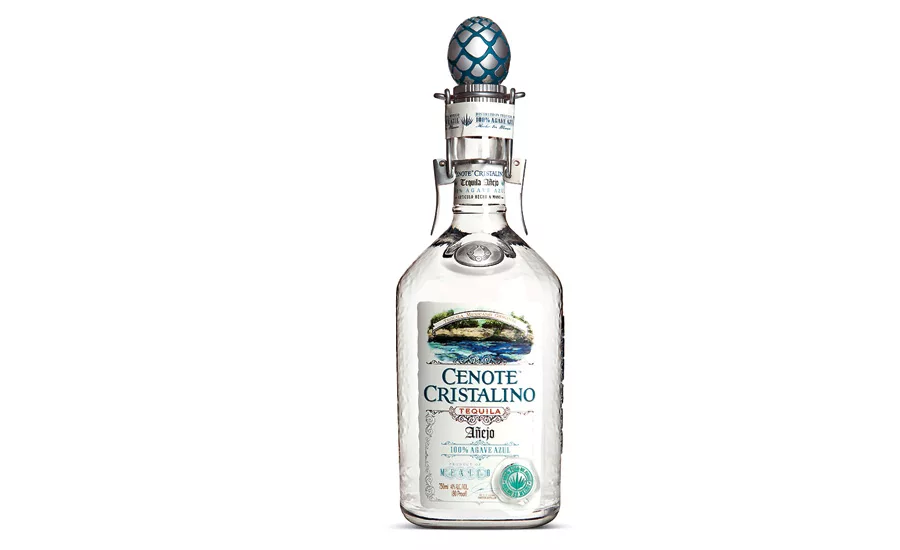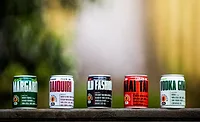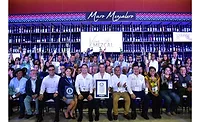Tequila sub-category sparks growth in spirits
Spirits segment increased 12.7 percent in dollar sales

In Tracy Byrd’s song, “Ten rounds with Jose Cuervo,” the country singer tells the story of a night out drinking 10 rounds of tequila. He ends the song on the tenth round and sings “And after 10 rounds with Jose Cuervo, I lost count and started counting again.” Although most consumers probably are not going 10 rounds with Jose Cuervo, industry data shows that they are enjoying a round (or two) of their favorite tequila.
The U.S. spirits market performed particularly well in the past year, with a few sub-categories posting significant growth, experts note. Chicago-based Information Resources Inc. (IRI) reported a 12.7 percent increase in tequila dollar sales, totaling approximately $520 million, for the 52 weeks ending Feb. 24 in IRI measured U.S. multi-outlets including convenience stores.
“In 2018, tequila led the spirits category in volume and value growth across both on- and off-premise outlets in the U.S.,” states a January Nielsen Insights titled “Tops of 2018: Tequila Drove Spirit Category Growth in 2018.”
“Within off-premise channels, white/silver tequila, the largest sub-category, drove the highest percent growth versus last year…,” it continues. “Within the on-premise market, volume sales of tequila increased 7.1 percent, with tequila’s strongest performance in 2018 seen in the independent and dining accounts across the U.S. While all tequila varieties posted growth in 2018, añejo, reposado and white silver contributed most to the overall category growth.”
(Individual brands)
| DOLLAR SALES | % CHANGE VS. PRIOR YEAR | CASE SALES | % CHANGE VS. PRIOR YEAR | |
| Jose Cuervo | $130,056,302 | 5.6 | 763,398 | 7.4 |
| Patrón | $86,315,716 | 9.2 | 161,418 | 9.2 |
| Sauza | $85,033,503 | 13.3 | 531,506 | 11.4 |
| 1800 | $26,432,573 | 9.3 | 94,262 | 11.9 |
| Don Julio | $24,574,813 | 35.5 | 38,895 | 33.6 |
| Cazadores | $22,733,449 | 17.4 | 87,793 | 19.4 |
| El Jimador | $17,945,696 | 7.0 | 91,829 | 4.5 |
| Casamigos | $14,570,842 | 65.5 | 27,689 | 68.1 |
| Espolòn | $13,086,441 | 44.1 | 48,101 | 43.5 |
| Familia Camarena | $9,552,396 | -17.1 | 42,605 | -21.0 |
| Total sales* | $520,314,781 | 12.7 | 2,323,204 | 10.6 |
*Includes brands not listed.
Source: Information Resources Inc. (IRI), Chicago. Total U.S. supermarkets, drug stores, mass merchandisers, gas and convenience stores, military commissaries, and select club and dollar retail chains for the 52 weeks ending Feb. 24.
The tequila renaissance
Premiumization is the million-dollar word within the beverage market, and the spirits category is no different. Consumers continuously are trading up for more premium offerings of their favorite spirit. “Consumers are not finding as many reasons as they once did to indulge in strong spirits,” explains Chicago-based Euromonitor in its June 2018 report titled “Spirits in the US.” “The experience in quality is now a more important focus and will drive up value sales for certain spirits faster than volume sales.”
Chicago-based Mintel also recognizes the effect premiumization is having on the spirits category. “Premiumization is the major trend within the tequila market; tequila is the fastest growing spirit and super-premium brands are the fastest growing sector of the tequila market,” says Caleb Bryant, senior beverage analyst at Mintel. “Tequila is in the middle of a renaissance; once a spirit associated with sugary Margaritas or with its flavor masked by salt and lime, tequila is now a spirit sipped, savored and appreciated.”
As a result of tequila’s noteworthy market performance and the premiumization trend, brands are launching new varietals. For example, in March, Cenote Tequila introduced a new ultra-premium expression: Cristalino. Cenote Cristalino tastes like a dark warm añejo, but has the clear complexion of a blanco, the company says. With hints of sweet vanilla, fresh cut herbs, dark chocolate and cinnamon, the new expression is designed to be consumed solely over ice, it adds.
The smoky brother
Commonly referred to as tequila’s “smoky brother,” mezcal recently has garnered much attention in the spirits sub-category. Made from tropical agave plants, mezcal is smoked in large pits, rather than distilled like tequila, giving it an earthier, smoky taste.
Within the off-premise channel, mezcal dollar sales increased 34.1 percent from 2017, according to the Nielsen Insights. On-premise dollar sales of mezcal also generated a double-digit increase of 17.8 percent increase during that same time, it states.
“Tequila’s smoky brother mezcal is a standout performer within the entire spirits market,” Mintel’s Bryant says. “The popularity of mezcal is emblematic of the entire tequila segment; it is a type of tequila often sipped by itself or used in complex cocktails rather than simple Margaritas. Additionally, its unique smoky flavor profile makes it an appealing spirit for dark spirit drinkers. Mezcal can act as the entry product for dark spirit consumers into the wider super-premium tequila segment.”
Even tequila brands are recognizing the increased interest in mezcal and crafting their own unique varietals. For example, last fall, Patrón Tequila launched Gran Patrón Smoky. The aged, smoky varietal uses agave that is roasted with mesquite for about seven days in small underground stone pits, creating a smoky aroma and taste, the company says.
Interestingly, increased consumer interest in mezcal suggests opportunities abound for other tequila varieties or tequila-like spirits, like sotol, Mintel’s Bryant explains. “Sotol is a spirit similar to tequila but is made from the sotol plant, rather than agave,” he says. “[It] is described as having a more earthy, herbaceous flavor than tequila [and] already is making its way into cocktails at restaurants.”
The future of tequila and its “brothers” looks bright, experts note. “[The] interest in authenticity and seeking out ‘handmade’ tequilas will continue to draw consumers toward the spirit,” Euromonitor’s report says. “As a continuation of the search for authentic foreign spirits, other agave products such as mezcal and sotol are also gaining a niche audience.” BI
Looking for a reprint of this article?
From high-res PDFs to custom plaques, order your copy today!






